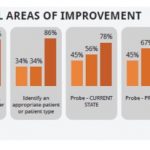What Is Your Virtual Training “Net-iquette”?
The new rules of communication in cyber space training.
Starting Point for Awareness
We all need to accept that our decisions, regardless of our conscious beliefs, may be influenced by unconscious bias or insider-outsider dynamics.
The 8-Question Early Talent Interview
For job interviews, many companies default to a combination of questionable quantitative measures such as GPA and class rank, and qualitative indicators based on behavioral interviews aligned to their competencies models. The trouble is, these kids today are sharp…really sharp.
eRevolution: Take One
Setting the stage for a stellar eFacilitation.
Training Top 125 Best Practice: Foundations of Vistage Chairing
Foundations of Vistage Chairing is a four-part series that teaches aspiring Chairs (former CEOs trained to become leaders of executive peer advisory groups) to apply complex and proven processes that are vital to becoming a successful Chair.
How to Conduct a Personal S.W.O.T. Analysis
This analysis process is used to capture information about your internal strengths and weaknesses, as well as external opportunities and threats. It can help you think about your career like a business and yourself like a product.
Invest in Developing New Employees’ Soft Skills—And Protect That Investment
The key to protecting your development investment in your new young talent is making young employees co-investors in the learning process.
Learning & Development’s Role in Preserving (and Enhancing) an Aging Federal Workforce
A look at the public sector’s succession planning challenges, as well as Learning & Development’s role in overcoming them.
How WWII Mathematicians Can Improve Your L&D Strategy
Abraham Wald and the big brains of the Statistical Research Group (SRG) helped to win WWII with math and logic. We can use similar tactics to win the battle for budget and resources in corporate learning and development.
Anticipation
What often gets in the way of mid-level performers rising to the next level? Most new and mid-level performers do not ANTICIPATE what will happen next!



